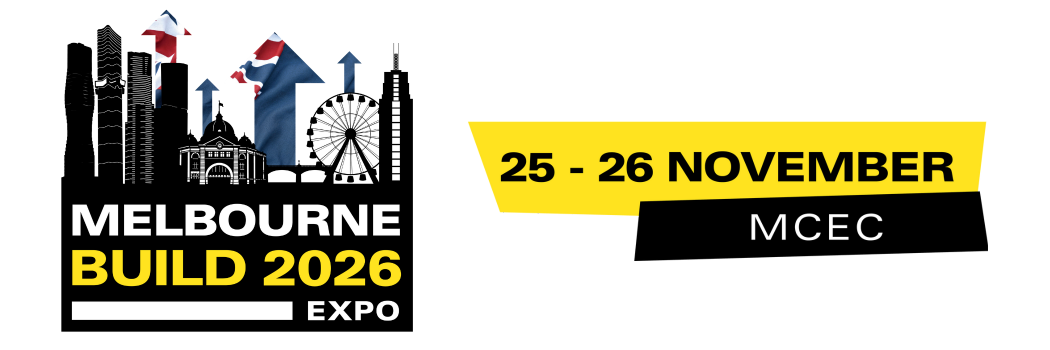Building a Greener Future for Melbourne: Insights from an Industry Expert on Innovations and Challenges in Sustainable Construction
)
Since the signing of the Paris Agreement in 2015, a legally binding international treaty on climate change under the UN Climate Change Conference, advancements towards sustainability have been smaller than anticipated. The construction industry continues to struggle with slow progress in reducing energy consumption and associated emissions, falling short of targeted benchmarks.
According to the UN Environment Programme Report 2024/2025, over the period from 2015 to 2023, the sector saw a modest 9.5% decrease in energy intensity, missing the 18.2% goal, while carbon dioxide emissions from building operations saw a 5.4% increase, failing to meet the 28.1% reduction target. Though renewable energy adoption in final energy demand inched up by 4.5 percentage points, it fell below the aimed 17.8 percentage point increase.
The 2024 Global Status Report for Buildings and Construction emphasises the crucial need for aligning building codes, promoting low-carbon materials, enhancing access to sustainable financing, and fostering circular construction practices. This sector remains pivotal in the pursuit of global net-zero carbon emissions and resilience objectives.
Exploring ways to alleviate the carbon footprint in construction within Melbourne, we engage in an interview with sustainability expert Alison Cleary. Delving into policies, innovations, and challenges surrounding eco-conscious construction practices in Melbourne, Alison offers valuable insights into the ongoing journey towards greener building initiatives.
 About Alison Cleary
About Alison Cleary
Alison Cleary is a strategic leader in environment, sustainability, governance and advocacy, with over 30 years of experience across NGOs, philanthropy, government, and the built environment. She is currently Policy and Program Manager at the Australian Sustainable Built Environment Council (ASBEC), leading national policy and advocacy initiatives for a more sustainable built environment. Prior to ASBEC, Alison held senior roles at Climateworks Centre, including Program Impact Manager and System Lead for Sustainable Economies. She was interim Executive Director at Open House Melbourne during COVID, successfully transitioning the program online to reach a global audience.
From 2010 to 2017, Alison was Victorian Executive Director of the Australian Institute of Architects. Earlier in her career, she held influential roles with Oxfam and the Australian Conservation Foundation, including as Oxfam International’s Tsunami Policy Lead following the 2004 Asian Tsunami. Alison serves on several not-for-profit boards, holds postgraduate qualifications in international and industrial relations, and proudly describes herself as an "expert generalist" committed to long-term, values-driven impact.
What are Examples of Sustainable Technologies & Practices in Melbourne?
 “Melbourne is leading in sustainable construction through Modern Methods of Construction (MMC) and low-carbon materials. A standout is T3 Collingwood, an award-winning commercial building constructed from cross-laminated timber (CLT) and glulam. It demonstrates how timber can significantly reduce embodied carbon while enhancing biophilic design and occupant wellbeing. Prefabrication enabled faster, cleaner construction and reduced site emissions.”
“Melbourne is leading in sustainable construction through Modern Methods of Construction (MMC) and low-carbon materials. A standout is T3 Collingwood, an award-winning commercial building constructed from cross-laminated timber (CLT) and glulam. It demonstrates how timber can significantly reduce embodied carbon while enhancing biophilic design and occupant wellbeing. Prefabrication enabled faster, cleaner construction and reduced site emissions.”
“MMC is increasingly being supported through policy—Victoria’s current consultation on enabling MMC aims to scale up these practices by addressing regulatory and planning barriers. These innovations contribute to sustainability by reducing waste, shortening build times, and improving energy performance.”
“ASBEC’s Our Upfront Opportunity report highlights that upfront embodied carbon can account for over half of a building’s emissions this decade—demonstrating the urgency of material and method shifts now. By adopting MMC and low-carbon materials like CLT, Melbourne projects are pioneering pathways to net zero buildings.”
Is there a Specific Project in Melbourne where Sustainable Design Significantly Reduces Impact?
 “In addition to T3 Collingwood another great example of sustainable design transforming both process and performance is the Woodside Building for Technology and Design at Monash University in Clayton.”
“In addition to T3 Collingwood another great example of sustainable design transforming both process and performance is the Woodside Building for Technology and Design at Monash University in Clayton.”
“The project incorporated high-performance façades, passive design strategies, and an all-electric energy system supported by rooftop photovoltaics. Its use of CLT and glulam significantly reduced embodied carbon compared to conventional concrete structures.”
“The design achieved a 6 Star Green Star rating and was developed under Monash’s Net Zero initiative. The building’s orientation, daylight access, and natural ventilation reduce operational energy use, while materials were selected for durability and low environmental impact.”
“Lifecycle assessments guided decisions to ensure long-term performance and minimal environmental burden. The integration of sustainability was not an add-on but embedded from concept through to delivery, demonstrating the role of intentional design and material innovation in reducing both operational and embodied carbon. It also serves as a benchmark for institutional leadership in sustainable construction.”
What are some Sustainable Construction Practices that are Currently Implemented?
“Projects across Melbourne are embracing MMC and low-carbon materials to reduce environmental impact. A strong example is the use of cross-laminated timber (CLT) in buildings like T3 Collingwood and the Woodside Building, both of which achieved major embodied carbon savings while supporting faster construction through prefabrication.”
“Industry is increasingly applying MMC through modular components, prefabricated façades, and integrated building services. These approaches reduce waste, improve build quality, and accelerate timelines.”
“Electrification is also a core focus—aligned with Victoria’s Gas Substitution Roadmap—supported by rooftop solar, batteries, and heat pumps. These technologies complement passive design and efficient envelopes to minimise energy use.”
“ASBEC’s Our Upfront Opportunity report has reinforced the importance of tackling embodied emissions now, not later. The current Victorian consultation on enabling MMC is a timely step, aiming to remove regulatory barriers and create conditions for scale. Together, these practices reflect a shift toward buildings that are faster to build and better for the planet.”
What Challenges Does Sustainable Construction Face? What Strategies Can be Employed to Overcome Them?
“Transitioning to sustainable construction—particularly using MMC and low-carbon materials like CLT—can be challenging due to outdated regulations, limited local supply chains, and perceived risk.”
“The Victorian Government’s ongoing consultation on regulatory reform for MMC highlights how planning and building systems can unintentionally hinder innovation. Additionally, ASBEC’s Our Upfront Opportunity notes a lack of consistent policy signals around embodied carbon, which discourages early investment in low-carbon materials.”
“Demonstration projects like T3 Collingwood build confidence by showcasing the viability and value of CLT and prefabrication. Early collaboration across disciplines—from architects to builders to regulators—is also key. Public sector leadership, paired with industry innovation, can drive rapid uptake.”
“With the right enabling environment, sustainable construction practices can move from niche to norm—delivering climate, economic and health benefits at scale.”
How do Sustainable Construction Practices in Melbourne Comply with Regulations and Standards, Impacting Project Design and Implementation?
“Sustainable construction practices are increasingly aligning with Victoria’s regulatory landscape. Updates to the National Construction Code (NCC), energy efficiency standards, and planning reforms are creating stronger expectations around energy performance and electrification.”
“In parallel, the Victorian Government’s consultation on enabling Modern Methods of Construction (MMC) signals a clear intent to support prefabrication and innovation in delivery.”
“Standards and tools like Green Star and NABERS latest Embodied Carbon tool are also driving industry to adopt low-carbon materials such as CLT.”
“ASBEC advocates for integrating embodied carbon into planning and building policy, a natural next step in aligning sustainability with regulation.”
“These frameworks are shaping project design and procurement, prompting more whole-of-life thinking. Where once sustainable outcomes were optional, they’re now becoming embedded expectations. Continued alignment between policy, incentives, and rating tools will accelerate this shift—enabling industry to scale up climate-positive construction with confidence.”
How Do You Envision the Future of Sustainable Construction in Melbourne and Beyond?
“The future of construction in Melbourne is increasingly low-carbon, modular, and circular. We’re likely to see greater policy focus on upfront embodied emissions, as ASBEC’s Our Upfront Opportunity makes clear—especially through regulation and procurement. Cross-laminated timber (CLT) and other mass timber systems and low carbon building materials will gain momentum.”
“As Victoria progresses reforms to enable MMC, we’ll see more modular and prefabricated projects that reduce time, waste, and disruption. Digital design and lifecycle carbon modelling will become standard, helping optimise material use from the outset. Electrification will be universal, paired with on-site renewables and battery storage. Circular economy principles—like adaptive reuse and design for disassembly—will also grow in importance.”
“Importantly, sustainability will expand to include climate resilience and equity, ensuring benefits reach all communities."
Navigating the challenges and opportunities of sustainable construction in Melbourne, the profound insights shared by industry expert Alison illuminate the transformative power of eco-conscious practices. From aligning with regulations to embracing cutting-edge technologies, the construction sector is on a promising trajectory towards a greener future.
We express our heartfelt gratitude to Alison for her insights into the current state of sustainable construction in Melbourne, her exceptional expertise and commitment to sustainability. Together, through collaboration, innovation, and a shared dedication to environmental stewardship, Melbourne and the broader construction industry can pave the way towards a more resilient and sustainable built environment.
 If you are passionate about advancing sustainability in construction, we invite you to join our Sustainability in Construction Ambassador Programme, like Alison. By becoming a part of this community, you can connect with hundreds of passionate advocates for a sustainable built environment who actively advocate for eco-conscious practices, challenge industry norms, and help foster a culture of environmental stewardship and innovation within the construction sector. Sign up today to amplify the importance of sustainability for the construction industry in Melbourne. Let's work together towards a greener future for all construction professionals. Join us in making a difference today!
If you are passionate about advancing sustainability in construction, we invite you to join our Sustainability in Construction Ambassador Programme, like Alison. By becoming a part of this community, you can connect with hundreds of passionate advocates for a sustainable built environment who actively advocate for eco-conscious practices, challenge industry norms, and help foster a culture of environmental stewardship and innovation within the construction sector. Sign up today to amplify the importance of sustainability for the construction industry in Melbourne. Let's work together towards a greener future for all construction professionals. Join us in making a difference today!
Melbourne Build is the leading and largest construction trade show for Melbourne and Victoria, taking place October 22nd & 23rd 2025 at MCEC. Featuring two jam-packed days of knowledge-sharing, 450+ expert speakers across 12 conference stages, a 175+ booth exhibition, Meet the Buyers, business networking, live music, entertainment and so much more! Don’t miss out on free tickets.

